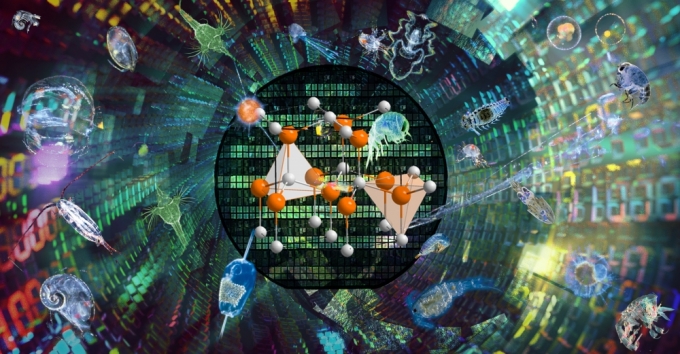The UCSB College of Engineering Professors B. S. Manjunath and Tresa Pollock, together with Marine Science Institute researcher Robert Miller, have received a $3.4 million grant from the National Science Foundation’s Office of Advanced Cyberinfrastructure to conduct research intended to relieve a bottleneck in scientific image processing. The project, which will be conducted under the title “Large-Scale IMage Processing Infrastructure Development” (LIMPID) also includes Co-PIs Nirav Merchant, from the University of Arizona, and Amit Roy-Chowdhury, from UC Riverside.
The team plans to “create a large-scale distributed image-processing infrastructure — the LIMPID — through a broad, interdisciplinary collaboration of researchers in databases, image analysis, and sciences,” according to the grant announcement.
“Imaging data is ubiquitous, and much of big-data science is image-centric. Working with such data should be as simple as working with text files in Google Docs,” said Manjunath, PI on the project and director of the UCSB Center for Multimodal Big Data Science and Healthcare. Manjunath’s group previously led the development of a unique resource, the BisQue image informatics platform, which makes it simple to share, distribute, and collaborate with large image datasets. “Think of BisQue as Google Docs for images,” he said.
BisQue is unique in its ability to handle a wide range of imaging data across diverse scientific applications, ranging from marine science and materials science to neuroscience and medical imaging. For example, Pollock and Manjunath are working together to integrate algorithms developed specifically for processing materials-science imaging data into BisQue. Recent advances in materials tomography (cross-sectional imaging) is generating an enormous quantity of imaging data that must be reconstructed, shared with the community, and further analyzed. “LIMPID will greatly enhance our ability to work with large material datasets and will leverage advances made in computer vision and machine learning,” said Pollock.
“In marine science, and particularly marine ecology, the technology to capture underwater images is growing exponentially, but most of the imaging data is manually processed,” said Miller. “In the Santa Barbara Channel Marine Biodiversity Observation Network, supported by NASA and the Bureau of Ocean Energy Management, we are developing image-analysis pipelines and models to process underwater imagery and automate the processes of identifying and quantifying marine organisms. LIMPID will expand that work dramatically to make UCSB the epicenter of image-analysis technology for marine science.”
Roy-Chowdhury’s group at UC Riverside will work with neuroscience researchers to analyze large volumes of live-imaging data that capture neuronal activities in the Drosophila nervous system. The LIMPID project team will leverage BisQue and the cyber infrastructure CyVerse at the University of Arizona to further enable image-based scientific discoveries.
“The potential impacts of the project are significant, from wide dissemination of novel computer vision and deep learning methods to development of automatic methods that can leverage data and human feedback from large datasets for software training and validation,” they write. The main goal of LIMPID, Merchant said, “is to provide specific user communities — materials science, marine science, and neuroscience — with the ability to share, test, and refine methods that have common underlying algorithms and procedures.

An arrtist's representation depicting a composite of marine materials
